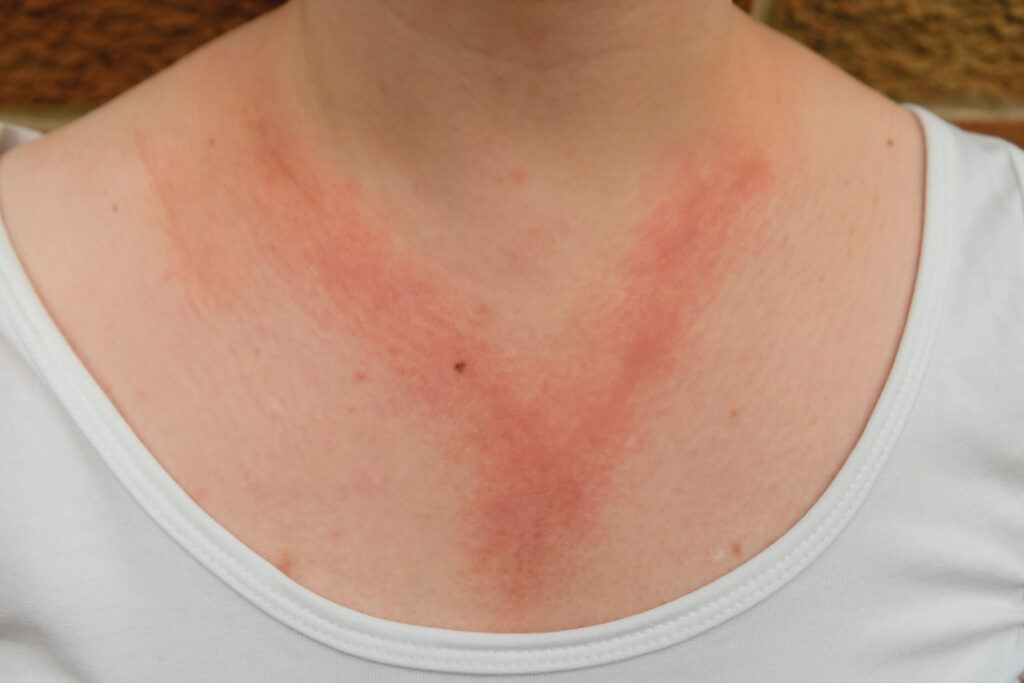Nanette Silverberg, MD, with Bob Kronemyer
When it comes to detecting pediatric contact dermatitis, clinicians often overlook potential sources of irritation, tending to focus on toys. But other items, such as jewelry, electronics, and crafts, may be culprits as well.

NANETTE SILVERBERG, MD
Clinical Professor of Dermatology and Pediatrics
Icahn School of Medicine,
Mount Sinai
New York City
“It is not just little toys that kids react to,” said Nanette Silverberg, MD, a clinical professor of dermatology and pediatrics at the Icahn School of Medicine at Mount Sinai in New York City. “There is costume jewelry that might be sold in a toy store or in a dress-up kit. Children can also react to toy watches with lovely characters shining in pretty colors.”
Similarly, a bicycle handle might contain certain kinds of plastics that cause reactions. But the leading source of contact dermatitis in children is nickel. This ubiquitous metal has most recently been reported in electronic toys, according to Dr. Silverberg, including cell phones with metal casings, laptops, tablets, and video-game controllers.
“We know that the number-one allergen worldwide is nickel,” Dr. Silverberg said. “In Europe, legislation limits the release of nickel from metal coming in contact with the skin, such as jewelry. Unfortunately, here in America, we lack that legislation.”
Copper, gold, black rubber, and homemade “slime” have also been reported as sources of contact dermatitis. “Slime is like Play-Doh, but slightly moister, and contains harsh ingredients such as detergents and glue,” Dr. Silverberg said. Slime may also contain the high-level allergen methylchloroisothiazolinone (MCI). “These ingredients can be rather irritating to the hands or allergenic,” she said.
Recent review findings
Dr. Silverberg, chief of pediatric dermatology for Mount Sinai Health Systems in New York City, was the senior author of a systematic review of pediatric toy contact dermatitis published last year in the journal Contact Dermatitis.1 “We identified only 25 good original reports of contact dermatitis to toys,” she said. “Therefore, it behooves physicians to report and be on top of thinking about toys at home as a potential relevant allergen.”
Among the toys in the review found to be associated with contact dermatitis were electronics, toy cars, costume jewelry, bicycles, “sqwish” balls, slime, Play-Doh and plasticine.

Implicated electronics included video-game controllers, cellphones, iPads, and computers.
The most commonly reported electronic product causing contact dermatitis was the cell phone. Besides nickel, chromate was suspected to play a role in some cases.
Cell phone dermatitis ranged from facial dermatitis (cheek and periauricular) to hand dermatitis. One patient even developed breast dermatitis by keeping her cell phone in her brassiere.
Discontinuation of the cell phone or use of protective barriers resulted in resolution of the rash in all cases.
Discontinuation of the cell phone or use of protective barriers resulted in resolution of the rash in all cases.
Allergenic metals are also found in die-cast model cars made of zinc, aluminum, magnesium, and copper alloy, which can cause recurrent finger dermatitis.
Likewise, costume jewelry may contain wood, latex, rubber, plastics, and dyes that can cause contact dermatitis. Moreover, ceramic- or pottery-containing jewelry might contain allergenic chromates, turpentine, and other metals.
Temporary tattoos were another source of toy dermatitis identified in the review.
Recommendations
“Based on our review, there is still an unmet need for observation of this segment of industry for labeling of contents and ongoing surveillance,” Dr. Silverberg said.
Because contact dermatitis can mimic eczema, it is crucial that relevant allergens be identified to distinguish the 2 conditions, according to Dr. Silverberg. “Kids will not improve, unfortunately, without elimination of the allergens,” she said.
“Kids will not improve, unfortunately, without elimination of the allergens.”
—Nanette Silverberg, MD
Children who have extensive dermatitis poorly responsive to medications or limited to specific locations, such as hands or eyelids, should be patch tested to screen them for different types of allergens. “Also, when counselling patients and families, we need to not only elicit from them the history of allergens like slime, but also to teach them to avoid toys that have the relevant allergens identified on patch testing,” Dr. Silverberg said.
Although metal-embedded products prevent radiation exposure, Dr. Silverberg encourages people who are allergic to place covers on their devices. “It is also helpful to have legislation that protects children,” she said. “For instance, items that are in close contact with the skin, such as jewelry and watches, could be required to have reduced nickel release, as is mandated in Europe.”
REFERENCES
1. Fenner J, Hadi A, Yeh L, Silverberg N. Hidden risks in toys: A systematic review of pediatric toy contact dermatitis. Contact Dermatitis. 2020 May;82(5):265-271. doi:10.1111/cod.13500
DISCLOSURES
Dr. Silverberg reports no relevant financial interests.

